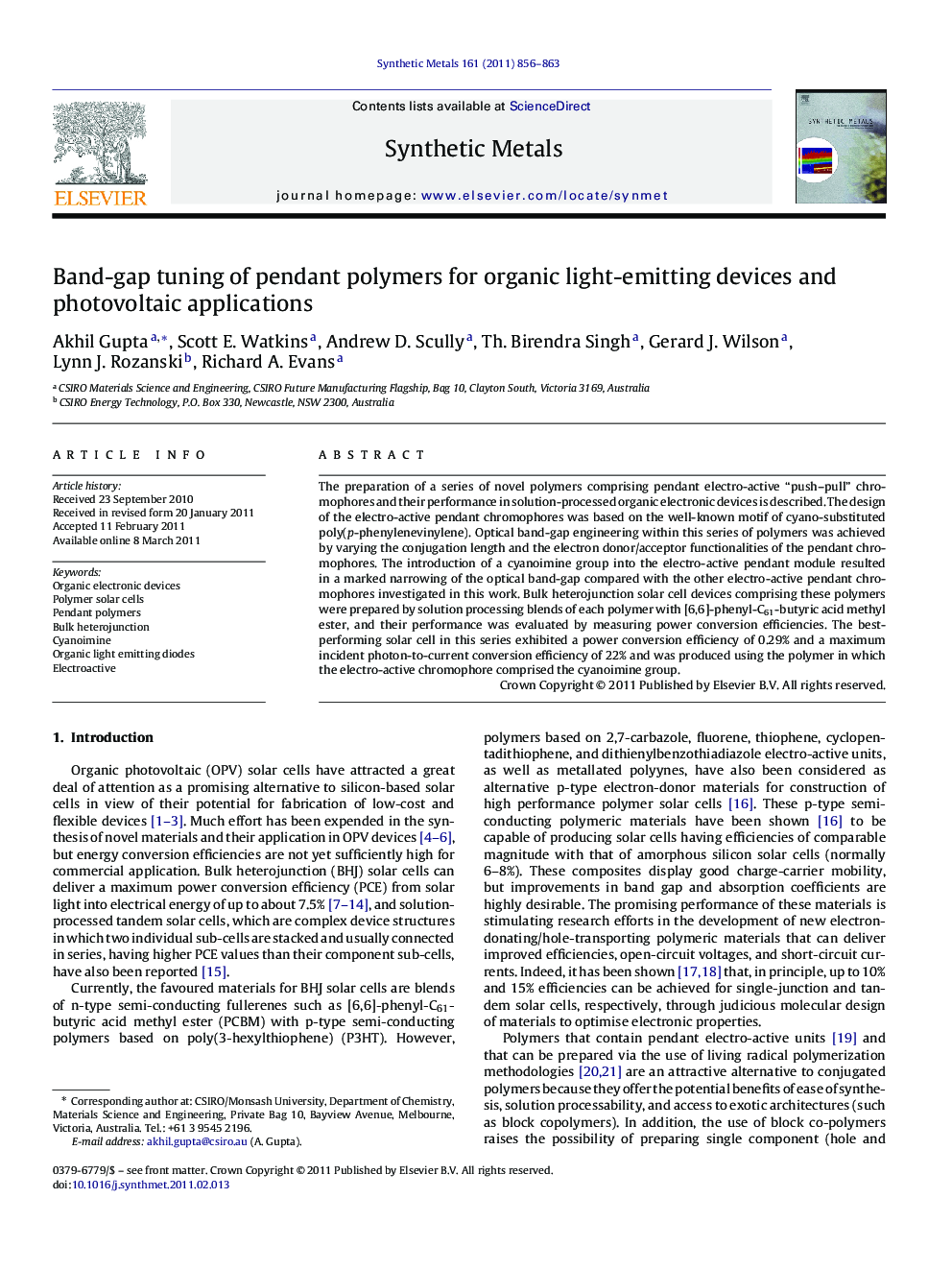| Article ID | Journal | Published Year | Pages | File Type |
|---|---|---|---|---|
| 1442074 | Synthetic Metals | 2011 | 8 Pages |
The preparation of a series of novel polymers comprising pendant electro-active “push–pull” chromophores and their performance in solution-processed organic electronic devices is described. The design of the electro-active pendant chromophores was based on the well-known motif of cyano-substituted poly(p-phenylenevinylene). Optical band-gap engineering within this series of polymers was achieved by varying the conjugation length and the electron donor/acceptor functionalities of the pendant chromophores. The introduction of a cyanoimine group into the electro-active pendant module resulted in a marked narrowing of the optical band-gap compared with the other electro-active pendant chromophores investigated in this work. Bulk heterojunction solar cell devices comprising these polymers were prepared by solution processing blends of each polymer with [6,6]-phenyl-C61-butyric acid methyl ester, and their performance was evaluated by measuring power conversion efficiencies. The best-performing solar cell in this series exhibited a power conversion efficiency of 0.29% and a maximum incident photon-to-current conversion efficiency of 22% and was produced using the polymer in which the electro-active chromophore comprised the cyanoimine group.
